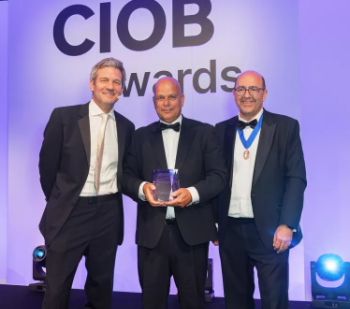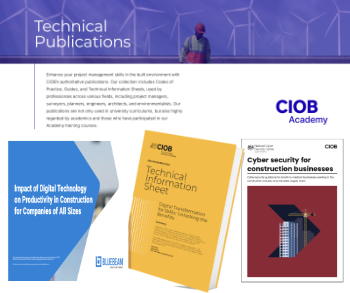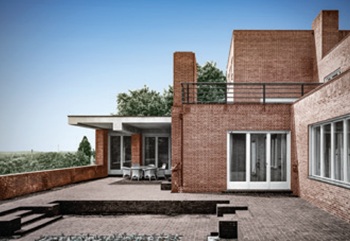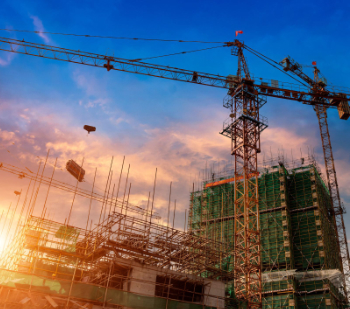Healthy excursions outside the thermal comfort zone
On 25 April 2017, Building Research & Information (BRI) published; Healthy excursions outside the thermal comfort zone, by Wouter van Marken Lichtenbelt, Mark Hanssen, Hannah Pallubinsky, Boris Kingma and Lisje Schellen.
The study found that exposure to environments outside of the 'normal' comfortable temperature range can help tackle major metabolic diseases, such as diabetes and obesity.
Exposure to mildly cold or warm environments, outside the standard comfort zone inside buildings (typically around 21 - 22°C) increases metabolism and energy expenditure which can help to tackle obesity. For those with type 2 diabetes, exposure to mild coldness influences glucose metabolism and after 10 days of intermittent cold, this increased insulin sensitivity (and so glucose handling) by more than 40%. This is comparable with the best pharmaceutical solutions available.
There are also indications that cardiovascular parameters may be positively affected by regular exposure to heat and cold.
The authors of the study have advocated therefore that buildings such as homes and offices should adopt drifting temperatures to create a a more healthy environment. A reduction in heating and cooling could also contribute to a reduction in greenhouse gas emissions.
This does not mean we need to suffer from discomfort to become healthy. Prolonged excursions outside the thermal comfort zone result in acclimatisation, and low or high temperatures in dynamic thermal environments can be perceived as acceptable or even pleasant (described as 'thermal alliesthesia' – ie cold stimuli will be perceived as pleasant by someone who is warm, whilst warm stimuli will be experienced as pleasant by someone who is cold).
Lead author, Professor of Ecological Energetics and Health at Maastricht University Wouter van Marken Lichtenbelt said; “It has previously been assumed that stable fixed indoor temperatures would satisfy comfort and health in most people. However, this research indicates that mild cold and variable temperatures may have a positive effect on our health and at the same time are acceptable or even may create pleasure.”
Richard Lorch, BRI editor in chief, said; "This ground-breaking research provides a new approach to how we think about the heating and cooling our of buildings. The health benefits from a short exposure to a more varied temperature range will redefine our expectations on thermal comfort. In turn, this will change our practices for heating and cooling our buildings."
Healthy excursions outside the thermal comfort zone; van Marken Lichtenbelt, Wouter; Hanssen, Mark; Pallubinsky, Hannah; Kingma, Boris; Schellen, Lisje. Building Research & Information, 2017/04/25. http://www.tandfonline.com/doi/full/10.1080/09613218.2017.1307647
--Building Research & Information 10:34, 27 Apr 2017 (BST)
[edit] Related articles on Designing Buildings Wiki
- BREEAM Thermal comfort.
- Cold stress.
- Comfort in low energy buildings.
- Evolving opportunities for providing thermal comfort.
- Heat stress.
- Maximum and minimum workplace temperatures.
- Operative temperature.
- Overheating - assessment protocol.
- Preventing overheating.
- Temperature.
- The building as climate modifier.
- Thermal comfort.
- Thermal indices.
- Thermal pleasure in built environments: physiology of alliesthesia.
Featured articles and news
CIOB Construction Manager of the Year 2025
Just one of the winners at the CIOB Awards 2025.
Call for independent National Grenfell oversight mechanism
MHCLG share findings of Building Safety Inquiry in letter to Secretary of State and Minister for Building Safety.
The Architectural Technology Awards
AT Awards now open for this the sixth decade of CIAT.
50th Golden anniversary ECA Edmundson awards
Deadline for submissions Friday 30 May 2025.
The benefits of precast, off-site foundation systems
Top ten benefits of this notable innovation.
Encouraging individuals to take action saving water at home, work, and in their communities.
Takes a community to support mental health and wellbeing
The why of becoming a Mental Health Instructor explained.
Mental health awareness week 13-18 May
The theme is communities, they can provide a sense of belonging, safety, support in hard times, and a sense purpose.
Mental health support on the rise but workers still struggling
CIOB Understanding Mental Health in the Built Environment 2025 shows.
Design and construction material libraries
Material, sample, product or detail libraries a key component of any architectural design practice.
Construction Products Reform Green Paper and Consultation
Still time to respond as consultation closes on 21 May 2025.
Resilient façade systems for smog reduction in Shanghai
A technical approach using computer simulation and analysis of solar radiation, wind patterns, and ventilation.
Digital technology, transformation and cybersecurity
Supporting SMEs through Digitalisation in Construction.
Villa Wolf in Gubin, history and reconstruction. Book review.
Construction contract awards down one billion pounds
Decline over the past two months compared to the same period last year, follows the positive start to the year.
Editor's broadbrush view on forms of electrical heating in context.
The pace of heating change; BSRIA market intelligence
Electric Dreams, Boiler Realities.
New President of ECA announced
Ruth Devine MBE becomes the 112th President of the Electrical Contractors Association.
























